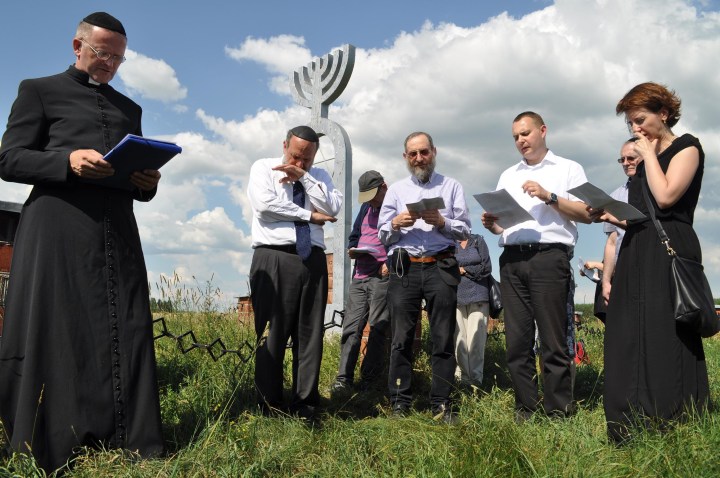By Kyle Herda
Impunity Watch Reporter, Europe
WARSAW, Poland – A mass grave has been unearthed in Bialystok, Poland. The grave was unearthed near the site of the Bialystok Detention Center, an active prison today currently holding 680 prisoners. More than 280 bodies have already been dug up behind the prison, but more have been found on former prison property behind what is now an apartment complex.

According to Zbigniew Kulikowski, the prosecutor in charge of the case, the mass graves were not burial grounds; they were “death fields.” The dead are likely victims of the Soviets, Nazis, and Polish security forces.
First, Soviets swept into Poland in September 1939, when over 100 people went missing. Next, from 1941 to 1944, Nazis killed about 6,000 around Bialystok. Finally, in the 1950’s and until 1956 when there was a shift in Soviet policy, Polish security forces were killing Poles. All three of these eras included holding prisoners, often to be killed, at the Bialystok Detention Center, which was created back in 1912 by the Russian czar.
Andrzej Ossowski, the team’s geneticist, says the team has made 40 identifications, including identifications from other sites. Marcin Zwolski, a historian for Poland’s Institute of National Rememberance, and who discovered the site, tries to find any identifying characteristics before bringing samples to Ossowski. Zwolski says that the sites are difficult to discover because the responsible parties “didn’t want anyone giving respect to the dead people.”
Other similar sites have been discovered elsewhere in Poland. The small town of Wasosz suffered a tragedy in 1941 when around 250 Jews were killed and buried in a pit outside town. While some want to dig up the site and examine the evidence, Poland’s Chief Rabbi Michael Schudrich says exhuming the bodies would violate Jewish law regarding respect for the dignity of the dead.
The site in Bialystok has suffered similar resistance. Maciej Bialous, a sociologist at the University of Bialystok, says that “people don’t talk about it … Some people don’t know about it, others don’t care and a lot of people just want to forget it.” Zwolski confirmed: “Some people still feel it is still safer not to talk about such matters.” Zwolski even reports that his team received anonymous threats and had bricks thrown through windows.
The sheer age of these cases and the nature of the circumstances at the time of these crimes make it very difficult to collect evidence. The lack of interest by some, tied with the strong disapproval of the investigation by others, is getting in the way of bringing closure to families that have suffered over decades. Despite these difficulties, the continued work of Zwolski, Kulikowski, Ossowski, and others on the team will continue to unveil more bodies and identify more victims from the atrocities that happened decades ago.
For more information, please see:
Newser – Polish Dig Unearths Decades of Killings – 6 October 2014
The New York Times – Unearthing a Barbarous Past in Poland – 5 October 2014
NBC – Wasosz Pogrom Mass Murder Investigation Sharply Divides Jewish Leaders – 5 October 2014


